The opportunity to see the interiors of the privately owned cottages on the grounds of the Martha’s Vineyard Camp Meeting Association occurs only once a year. On Wednesday, August 10, five of the larger cottages which face the Tabernacle on the north end of Trinity Park, as well as a sixth one nearby, will be open to the public as part of the 2011 Camp Ground Cottage Tour.
Visitors will also be able to see the fabulous garden at Captain’s Corners at 34 Trinity Park, the Cottage Museum, and Trinity Methodist Church. The $25 price of admission includes delicious refreshments. Tickets can be purchased at the Tabernacle on the day of the event from 10 a.m. to 3 p.m. (the last tickets will be sold at 2 p.m.). They are also available in advance via Paypal at mvcma.org and at the Cottage Museum.
All of the cottages on the tour were built between 1867 and 1878 and each has retained some architecturally significant original features. Some early Camp Grounders enlarged their homes by combining cottages together. One can easily see the two-cottage combination in the Potter home and the three combined cottages (plus an outhouse!) that compose the large home owned by the Desautelles. The Maitland cottage is unusual not only because of five doors which open onto the porch, but also because it is one of the few still occupied continuously by descendants of the original owner. The Michelson cottage is fully winterized, but still appears much as it did in a 19th century photo hanging in the dining room. Although many campground cottages have Gothic or Romanesque windows, the Frey cottage has square windows and doors cut out of the random-width pine walls and angular gingerbread on the porch. The Ganz cottage features an elaborate balcony and several varieties of shingles.
The stops on the tour include:
15 Fourth avenue, The Dog House
This cottage, built in 1871, has been owned by a member of the same family for 50 years, and has an interesting history. Anne Ganz purchased the cottage from the niece of Lucy and Sarah Adams. The Adams sisters were little people who toured the country with the Barnum and Bailey Circus and the General Tom Thumb Company in the late 19th century. One remnant of their residence remains today — a small clawfoot tub in the bathroom. Because the cottage exterior is covered with ornate shingles and elaborate gingerbread, it is an excellent example of Carpenter Gothic construction. The upstairs porch and dormers are decorative as well, and include cutouts of dogs, which are painted to match the pets of Holly Ganz, and her husband, Carlton Osborne, who own the cottage along with Holly’s mother, Anne.
28 Trinity Park
The Desautelle cottage was purchased almost 30 years ago and is one of the larger homes in the Camp Ground. It is owned by Bill and Rachel Desautelle and was built in 1871 by the Ripley Brothers, shipwrights who became homebuilders after the whaling business declined in Edgartown. When viewed from the air, the cottage is shaped like a cross and is actually three houses put together. The living room was the original house; two halves of an adjacent cottage were added to each side; a third cottage became the kitchen, and an outhouse became the present laundry and bathroom. The additions are easily recognized when one looks at the directions of the boards in the ceiling of each room. There is an elegant mahogany fireplace in the living room and a beautifully restored 1936 Universal El ectric stove in the kitchen that is still used for cooking. The sunroom in the back of the house has a view of the harbor.
43 Trinity Park, The Moore Cottage
The Moore Cottage, built in 1872, is one of only a handful of cottages in the Camp Ground still occupied by family members of the original owner. Joann Maitland, a sixth-generation descendent of Phoebe Moore, owns the cottage along with her husband, Mike. Two 19th century photos show that the cottage is original except for the one-story shed in the back. An unusual diamond-shape window on the second floor makes the house easy to identify in photos. Because the cottage has remained in one family, there are many original artifacts and pieces of furniture still present. They include a Fairy Crawford Stove that was used for heat and cooking until 1992, several chairs, a working Victrola and several lamps.
45 Trinity Park
Award-winning children’s author Richard Michelson (Busing Brewster and a new book, Lipman Pike) and his wife, Jennifer, purchased their Camp Ground cottage in 2008. It is one of the few Camp Ground cottages that is fully winterized, but it was done from the inside so all the original outside features are intact. An early photo on the wall of the great room shows that this 1878 cottage was a rooming house in the years after it was built. The great room contains an interesting rolltop hutch, which has been in the cottage for some time. The former owners fully renovated the cottage, including their big splurge, an apron-front sink with a colorful design including fruits and vegetables, chickens, and leaves, surrounded by geometric patterns. The Michelsons have made changes of their own, including a new second floor porch and a luxurious outdoor shower.
47 Trinity Park, This Is Summer
Amy Potter has owned her 1867 cottage for 28 years. It was named by her two-year-old granddaughter who, when arriving at the cottage soon after it was purchased, announced that “this is summer” and the name stuck. It is actually two cottages attached side-by-side, with the one on the right offset from the main cottage on the left. The house has original features inside and out: tongue-and-groove boards, Gothic windows with cranberry glass inserts, and two sets of double Gothic entry doors. One set opens into the living room and the other opens into the first floor bedroom, which is part of the second house. The unique filigree cutouts, which appear under the porch railings, were originally a part of the Fraser House, a guest house formerly located near the Parish House of Trinity Methodist Church.
53 Trinity Park, Small Frey
Walter Frey has owned his 1870 Camp Ground cottage for 41 years. The gingerbread is linear and angled, rather than the ornate scrollwork found on many of the cottages. The double doors and windows are square, rather than round or Gothic. Walter’s mother in law spent many happy summers as a Camp Ground resident, and as a memorial to her, Walter and his late wife, Beryl, planted a memorial garden across Trinity Park from their cottage in the early 90s. Flowers for the Sunday Tabernacle services often are cut from this garden.
Garden at 34 Trinity Park, Captain’s Corners
A beautiful cottage garden is lovingly tended by the owners, Ellen and Ron Descheneaux. The garden includes a mixture of annuals, perennials, herbs, and vegetables. The garden contains both sun and shade plants, as well as multiple colors of hydrangeas. It is indeed an idyllic sanctuary.
Trinity Methodist Church, Trinity Park
The historic Trinity Methodist Church was built in 1878, one year before the Tabernacle. It was restored in 2001 to its original Victorian appearance. The beloved chimes that ring every day from the tower are a longtime campground tradition.

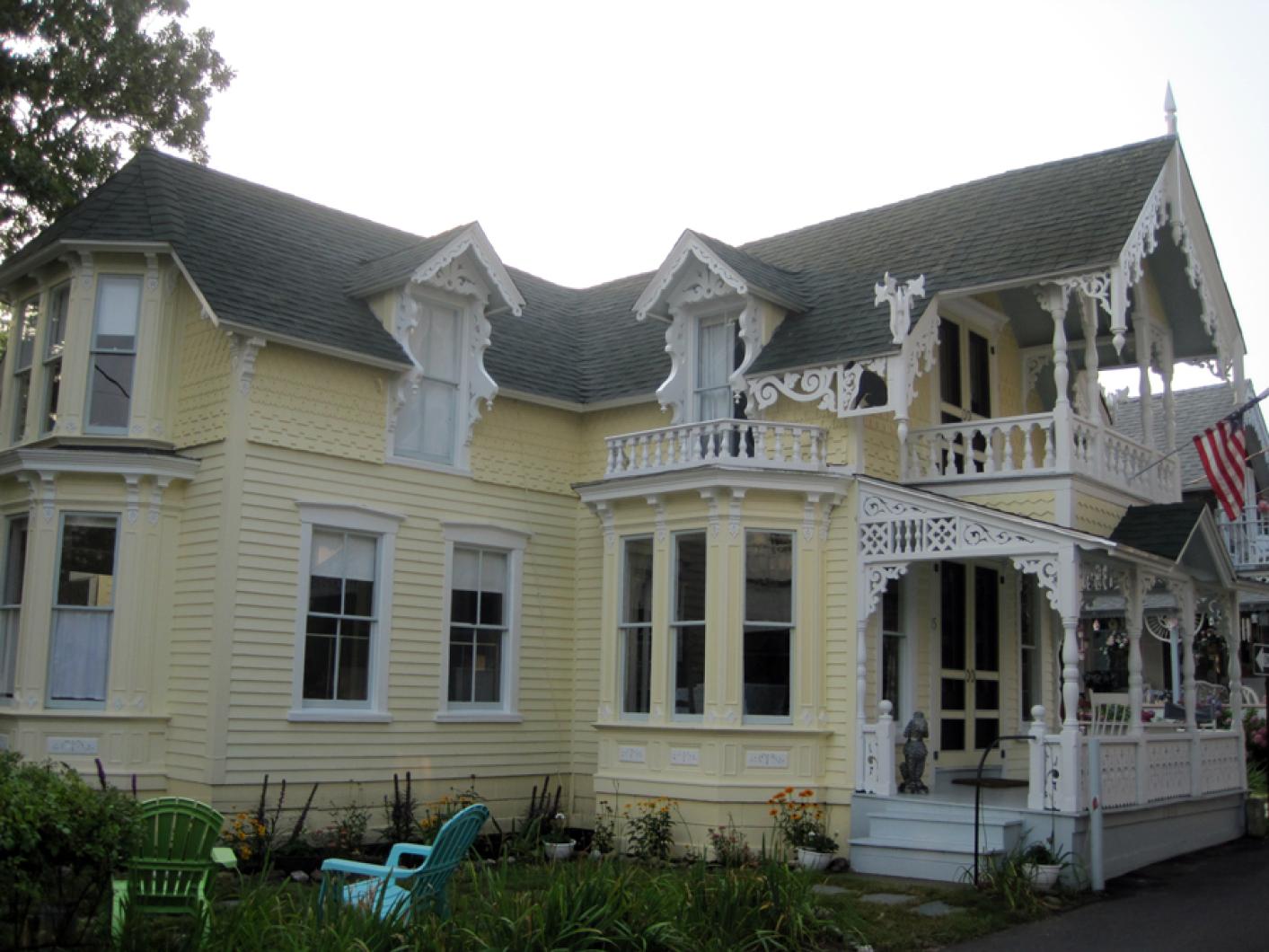
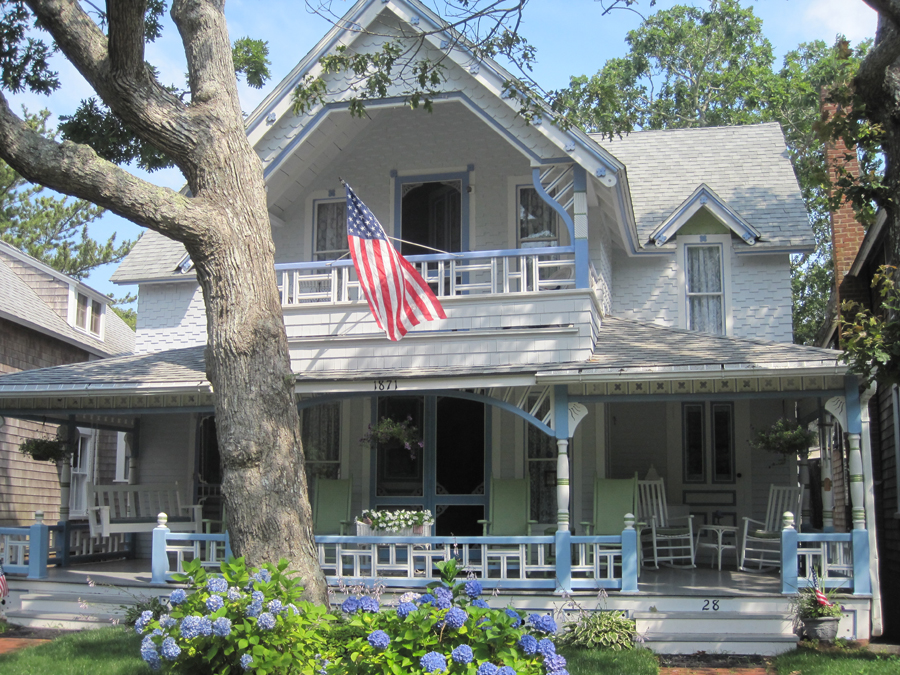
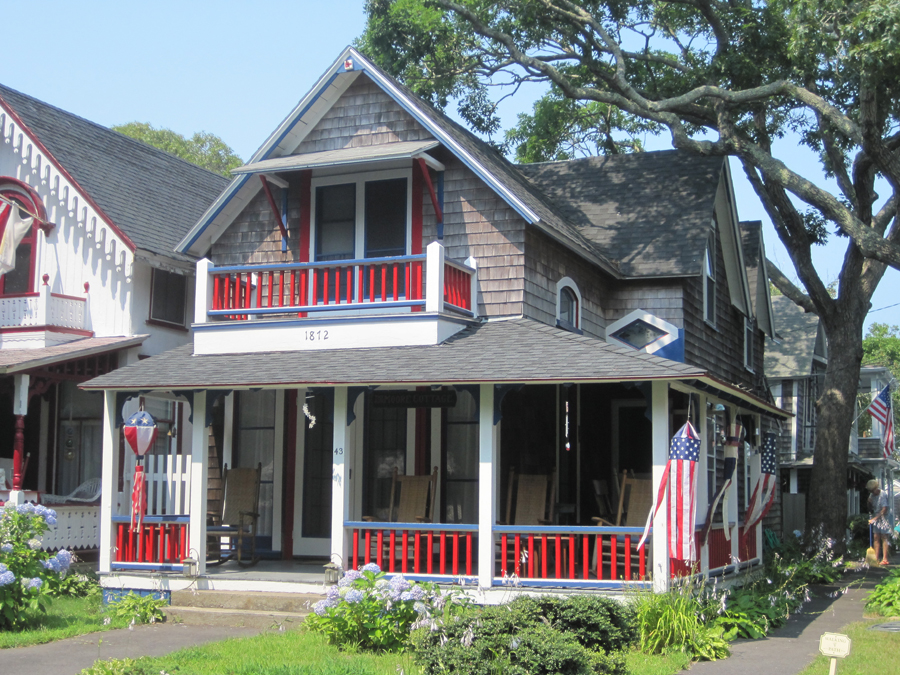
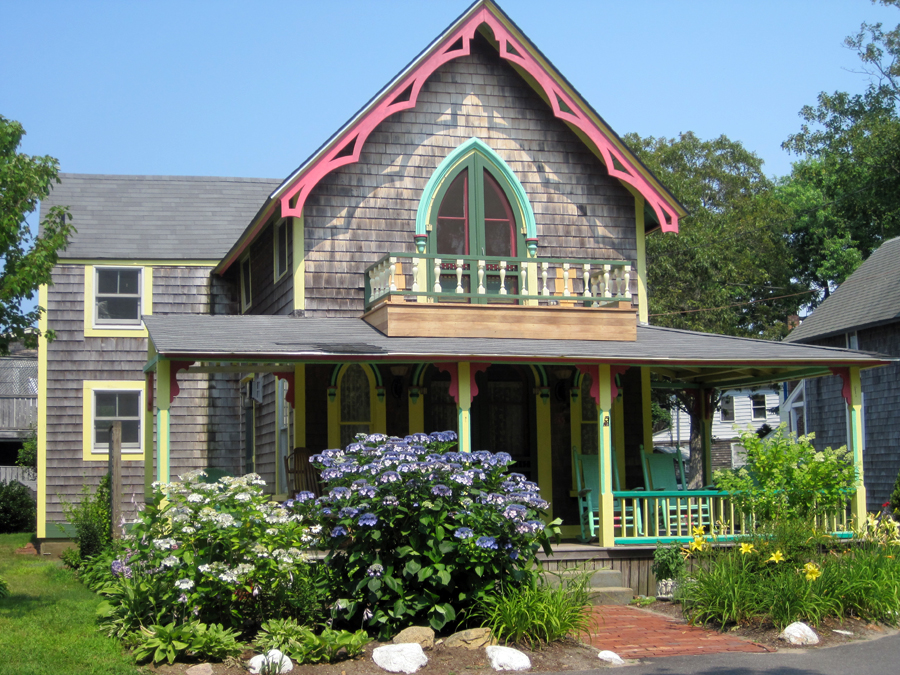
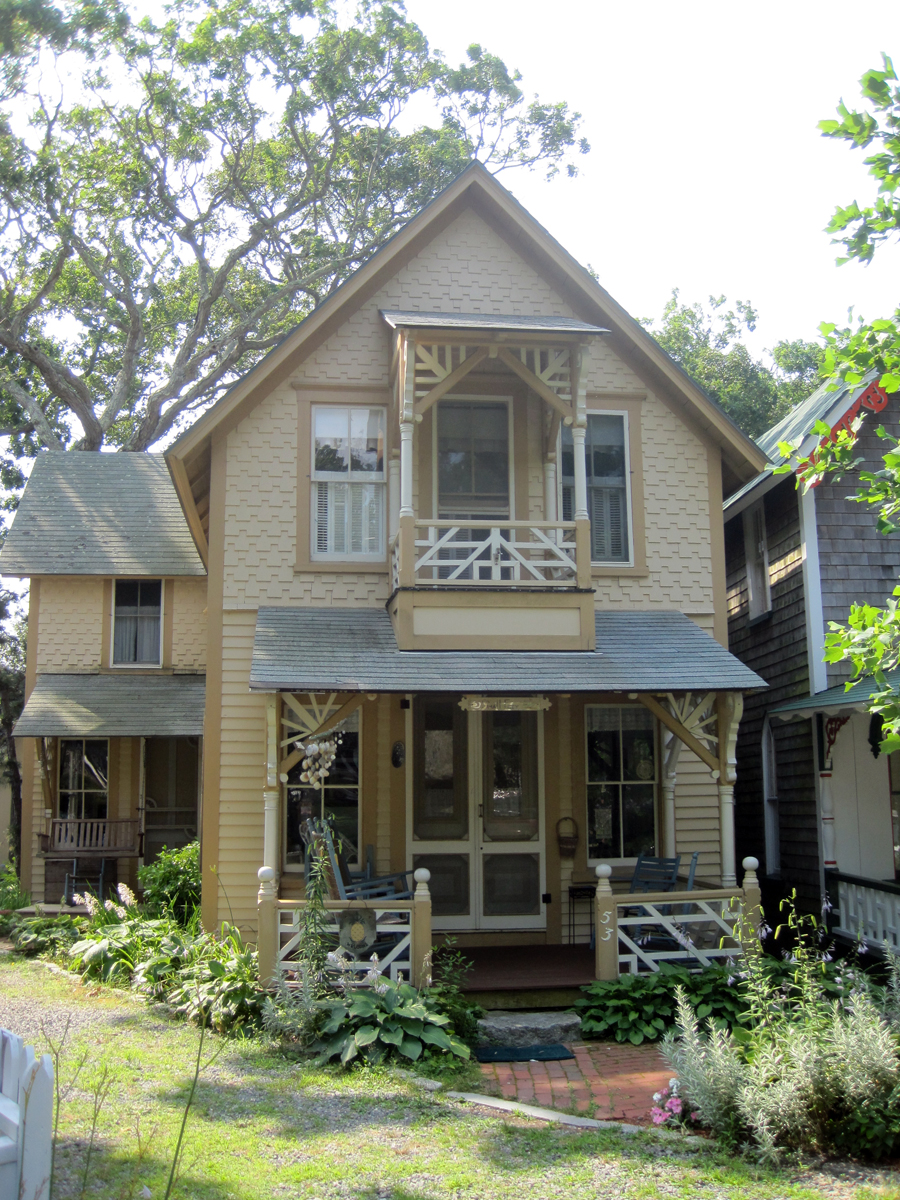





Comments
Comment policy »